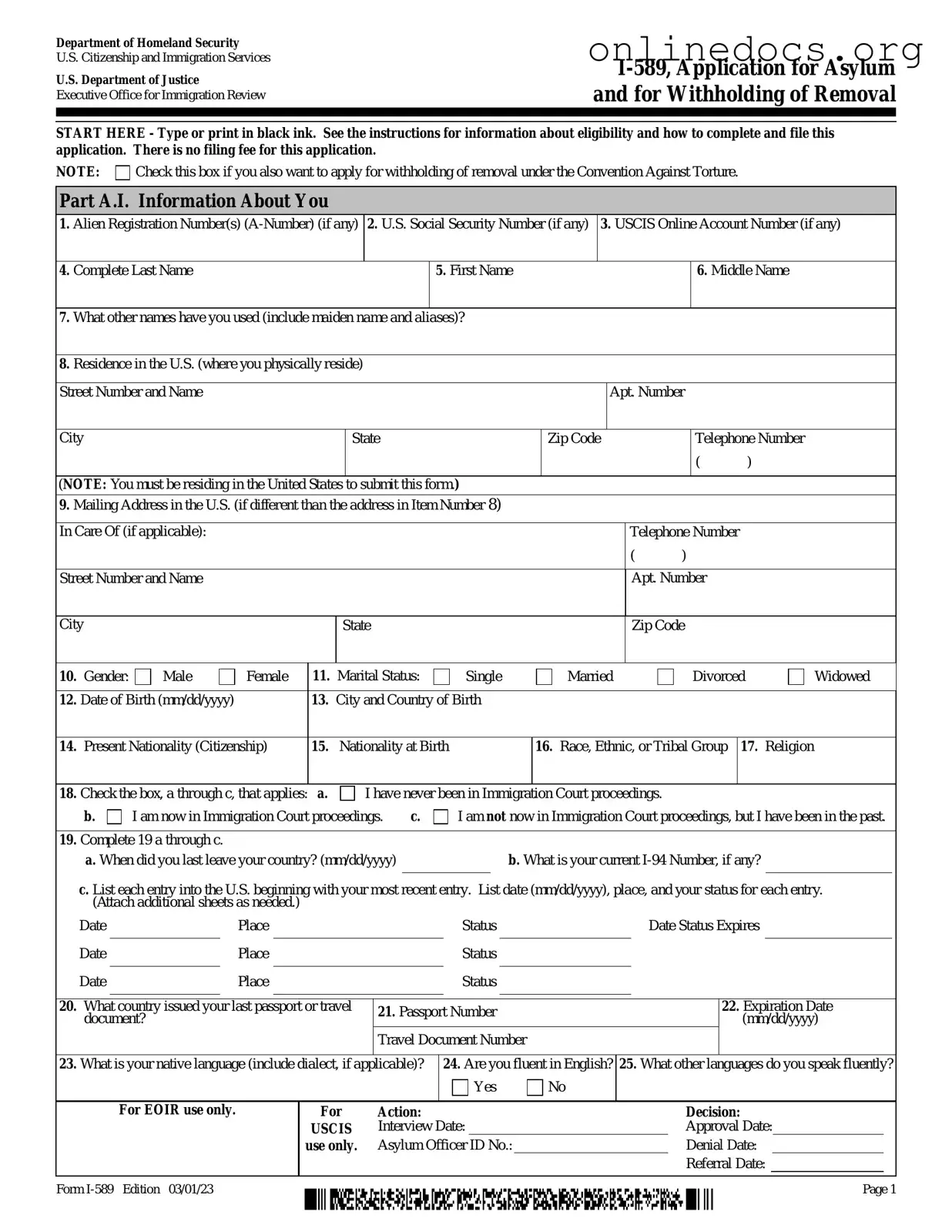The USCIS I-589 form is a request for asylum in the United States, but there are several other forms that share similar purposes or processes. One such document is the I-131, Application for Travel Document. This form allows individuals who have applied for asylum to request permission to travel outside the U.S. and return. Like the I-589, the I-131 serves those seeking protection, ensuring they can maintain their status while addressing their travel needs.
Understanding the various forms related to U.S. immigration can be daunting, but resources are available to help navigate this complex landscape. For those looking for precise documentation, the Ohio Lease Agreement form is a prime example of clarity in legal matters. To find related documents and guidance, you can visit legalformspdf.com, where comprehensive templates and resources are provided to ensure individuals and landlords alike have access to the necessary information for successful agreements.
Another related document is the I-730, Refugee/Asylee Relative Petition. This form enables individuals who have been granted asylum to petition for certain family members to join them in the United States. Both the I-589 and the I-730 focus on family unity and protection, emphasizing the importance of keeping families together during the asylum process.
The I-485, Application to Register Permanent Residence or Adjust Status, is also similar. After being granted asylum, individuals can use this form to apply for a green card. This document signifies a transition from temporary protection to permanent residency, paralleling the journey initiated with the I-589 application for asylum.
The I-864, Affidavit of Support, is another relevant document. When applying for certain benefits or status adjustments, individuals may need to demonstrate financial support. This form ensures that asylum seekers have the necessary backing to avoid becoming public charges, just as the I-589 aims to secure their safety and stability in the U.S.
The I-601, Application for Waiver of Grounds of Inadmissibility, is also noteworthy. In cases where an individual might be inadmissible to the U.S. due to certain legal issues, this form allows them to request a waiver. Similar to the I-589, it addresses barriers to obtaining safety and security in the U.S., focusing on the individual’s circumstances.
The I-765, Application for Employment Authorization, is crucial for asylum seekers. After filing the I-589, individuals can use the I-765 to request permission to work while their application is pending. This document provides financial independence, paralleling the protective aim of the I-589 by allowing individuals to support themselves during the asylum process.
The N-400, Application for Naturalization, is another important document. Once an individual has been granted asylum and later becomes a permanent resident, they may apply for citizenship using the N-400. This form represents the final step in the journey that often begins with the I-589, highlighting the path from seeking refuge to becoming a full citizen.
The I-944, Declaration of Self-Sufficiency, is relevant as well. This form assesses whether an individual can support themselves without relying on government assistance. It relates to the I-589 by emphasizing the need for self-sufficiency and stability for those seeking asylum in the U.S.
The I-290B, Notice of Appeal or Motion, is another document worth mentioning. If an asylum application is denied, individuals can use this form to appeal the decision. This process is critical for those who feel they deserve protection, similar to the initial request made through the I-589.
Lastly, the Form I-220B, Order of Supervision, applies to individuals who are granted asylum but are still under supervision. This document outlines the conditions of their supervision, reflecting the ongoing process of ensuring safety and compliance with U.S. immigration laws, much like the initial I-589 form that starts their journey toward asylum.
